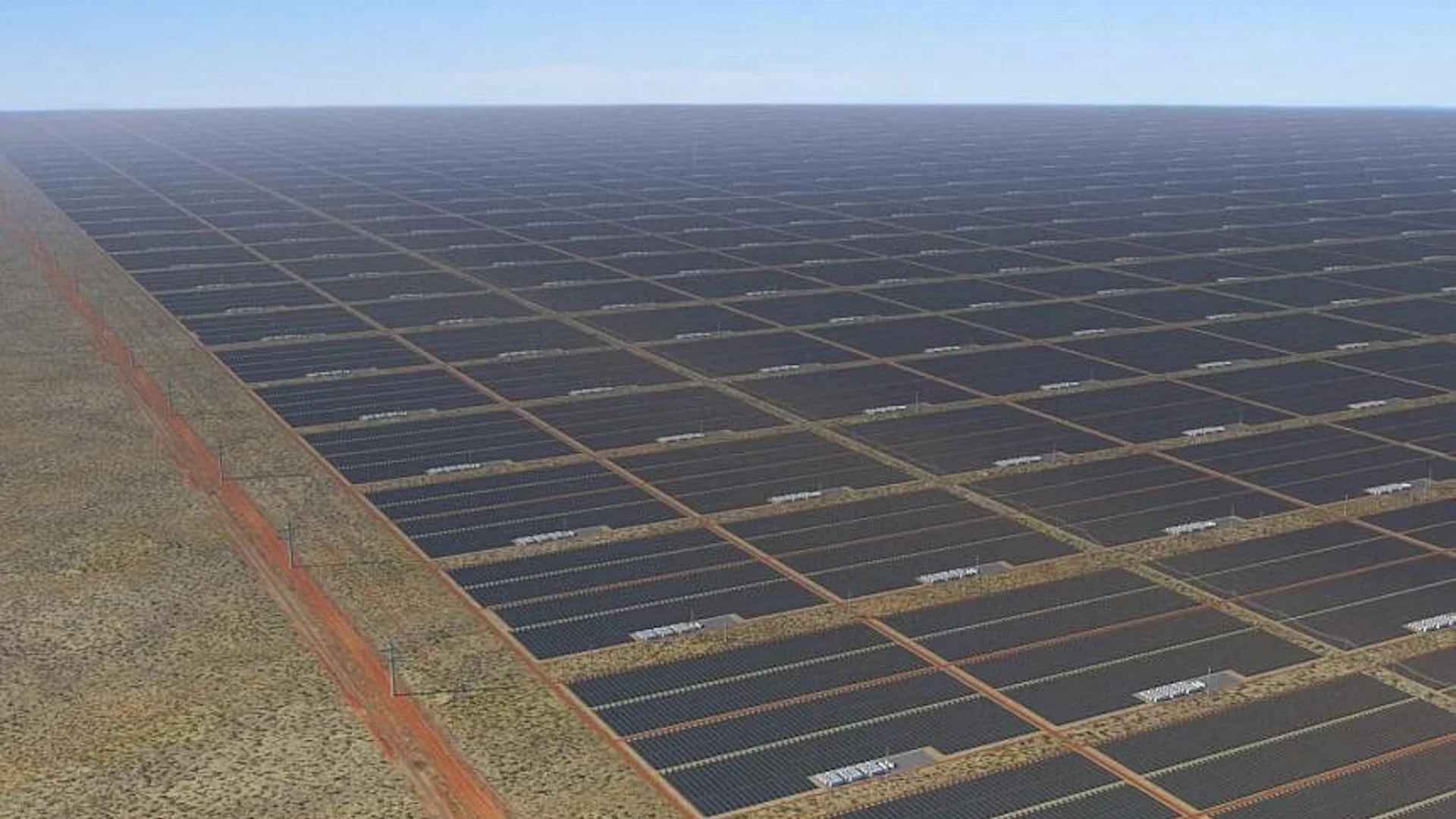The world is on the cusp of an energy transformation that could make the Industrial Revolution look minor. Mike Cannon-Brookes is banking on the Land Down Under to be a major driver of that change.
The billionaire co-founder of software giant Atlassian plans for Australia, where he grew up, to become the hub for the two biggest renewable-energy projects ever. According to Bloomberg, the SunCable project will build a 20-gigawatt solar farm and a 4,300-kilometer undersea transmission cable, called the Australia-Asia PowerLink.
But even he acknowledges this $21 billion undertaking by SunCable is a “completely bats*** insane project.” Still, it’s the first step in a 10-step outline to move clean energy to Asia from one of the sunniest places on Earth. This cable would run along the bed of the Indian Ocean and feed Singapore’s great demand for electricity.
Australia could produce 10,000 times more solar power than it consumes, as reported by Bloomberg, though it is a coal behemoth and exports more than any country besides Indonesia.
It will take governments, companies, the wealthy and powerful, and individuals to fully divest from such dirty energy sources, which are rapidly heating the planet and leading to more severe and frequent storms, wildfires, and other weather events.
Cannon-Brookes compared the energy transition to technology disruption, saying: “Everyone changed to a smartphone over a five-year period.”
“Averting catastrophic climate change will require a similar rapid societal shift, including changing how energy is generated and delivered,” Brian Kahn wrote. “In BloombergNEF’s net-zero scenario, solar will be the world’s largest source of clean energy by 2030. To get there will require building the equivalent of the world’s largest solar farm every few days by the end of the decade.”



This seems pretty cool. It’s no crazier than putting a communication cable across the oceans and we already have the support for that. Is there something I’m missing?
Transmission over long distances is much harder with power since you have to send it through cables that have some resistance; fiber optic cables are reflecting light that doesn’t degrade as quick.
I think this is doable, the only question is, at what cost? Losing a lot of energy is inefficient, but that’s only if you care about the efficiency more than the result (getting cleaner energy to a place that wouldn’t have it otherwise). There may be better solutions, but I appreciate the desire to get this going here.
I wonder what happens if the cable that carries this much power breaks under water. And even if it doesn’t break the elecro-magnetic field around it is gonna be massive.
But anyway, other similar projects have either failed (plans to build such a giant solar-farm in Morocco) or have pivoted to “green” hydrogen as the energy transport medium.
It’s also one of the many reasons power lines are typically aerial, and only underground at last mile locations when necessary. High electrical current experiences impedance due to the surrounding medium, and air offers the lowest impedance.
It’s starting to become increasingly common - there’s a project in the offing to run a cable from Morocco to the UK to take advantage of all that Saharan sunshine. There’s long been talk of stringing a few across the Med and building large numbers of solar farms across North Africa to speed up the green transition in Europe (at one point there was talk of worried insurance companies bankrolling such projects as climate change could bankrupt them). Eventually there will be a web of such cables into and across Europe shuttling energy around - excess British being stored in Norwegian HEP facilities, etc.
That would be a nice reset. Of course they’d be back pretty quickly, I just want them to check themselves since they’re ruining America.
I agree. They’ve also come a long way since the original cable were put in for communication in 1858. Granted, it took almost a 100 years for tech to catch up. We’re pretty innovative now though.
I suppose the craziness comes from it being a $21B undertaken to build two of the largest renewable projects yet, which rely on both working properly. That’s quite a bold move and it’s risking a lot of cash.